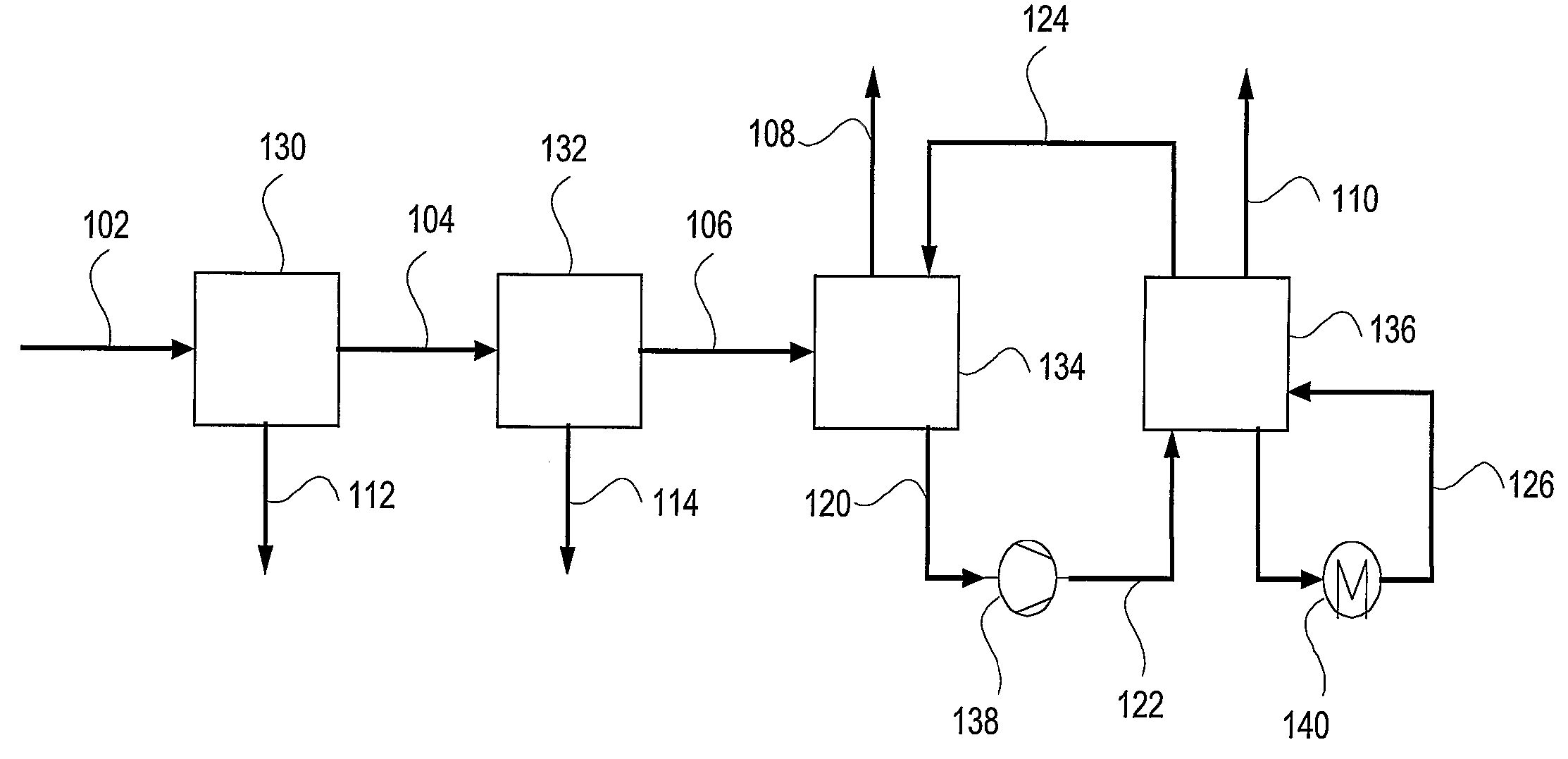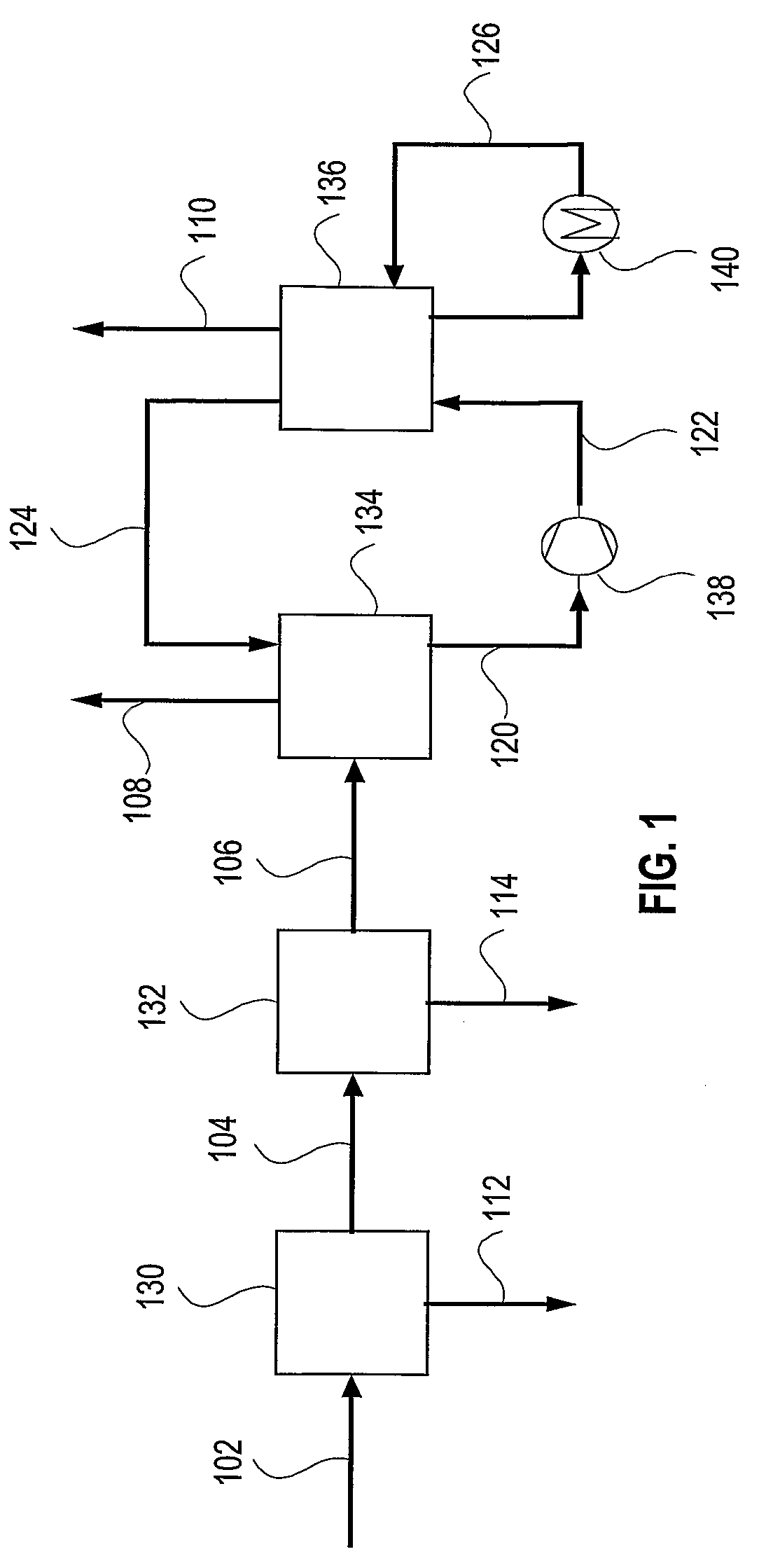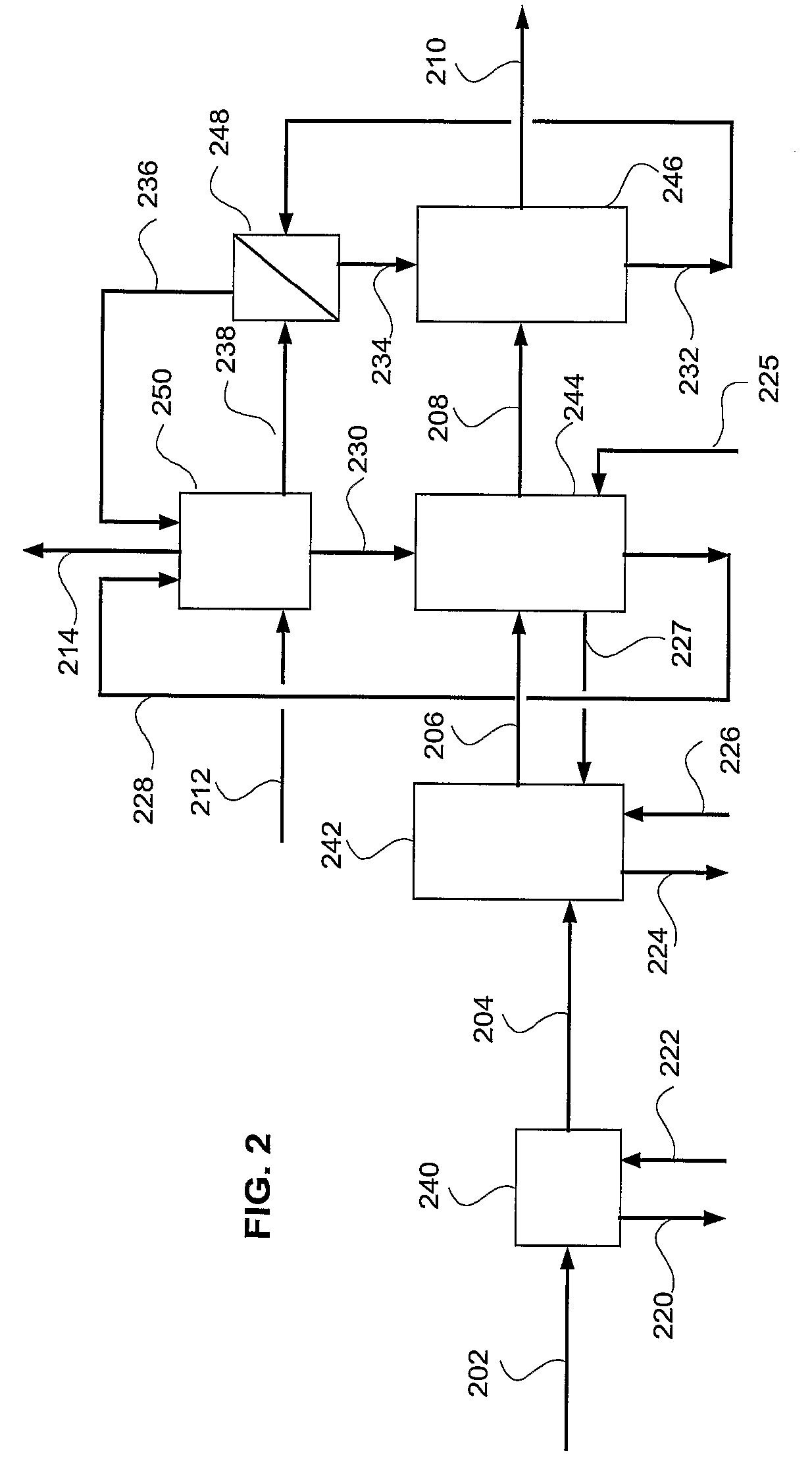Ultra cleaning of combustion gas including the removal of CO.sub.2
a technology of combustion gas and cleaning equipment, which is applied in the direction of emission prevention, separation processes, lighting and heating apparatus, etc., can solve the problems of high cost of capturing the last few percents of harmful contaminants, and the inability to operate with dirty, etc., to achieve the effect of reducing the moisture content, low volume and high co2 concentration
- Summary
- Abstract
- Description
- Claims
- Application Information
AI Technical Summary
Benefits of technology
Problems solved by technology
Method used
Image
Examples
Embodiment Construction
[0032]In accordance with the present invention, a process and system to remove most contaminants, including CO2, from gas streams is provided. These gases are typically resulting from the combustion or gasification of coal, liquid fuels, gaseous fuels and organic waste materials. The contaminants include residual of e.g. SO2, SO3, HCl, HF, CO2, particulate matter including PM2.5, mercury and other volatile matter. The high removal efficiency of the contaminants is achieved by saturation and efficient cooling of the gas to below its adiabatic saturation temperature and preferably to as low as 0-20, or even 0-10, degrees Celsius. Fine particles and acid mist are nucleation sites for the condensation of water. Thus, practically all fine particles and acid mist are removed from the gas stream. The low temperature creates an environment of low vapor pressure of SO2, SO3, HCl, HF, Mercury and other volatile matter, which condense into the cold water as well.
[0033]The cooling of the flue g...
PUM
| Property | Measurement | Unit |
|---|---|---|
| temperature | aaaaa | aaaaa |
| temperature | aaaaa | aaaaa |
| temperature | aaaaa | aaaaa |
Abstract
Description
Claims
Application Information
 Login to View More
Login to View More - R&D
- Intellectual Property
- Life Sciences
- Materials
- Tech Scout
- Unparalleled Data Quality
- Higher Quality Content
- 60% Fewer Hallucinations
Browse by: Latest US Patents, China's latest patents, Technical Efficacy Thesaurus, Application Domain, Technology Topic, Popular Technical Reports.
© 2025 PatSnap. All rights reserved.Legal|Privacy policy|Modern Slavery Act Transparency Statement|Sitemap|About US| Contact US: help@patsnap.com



